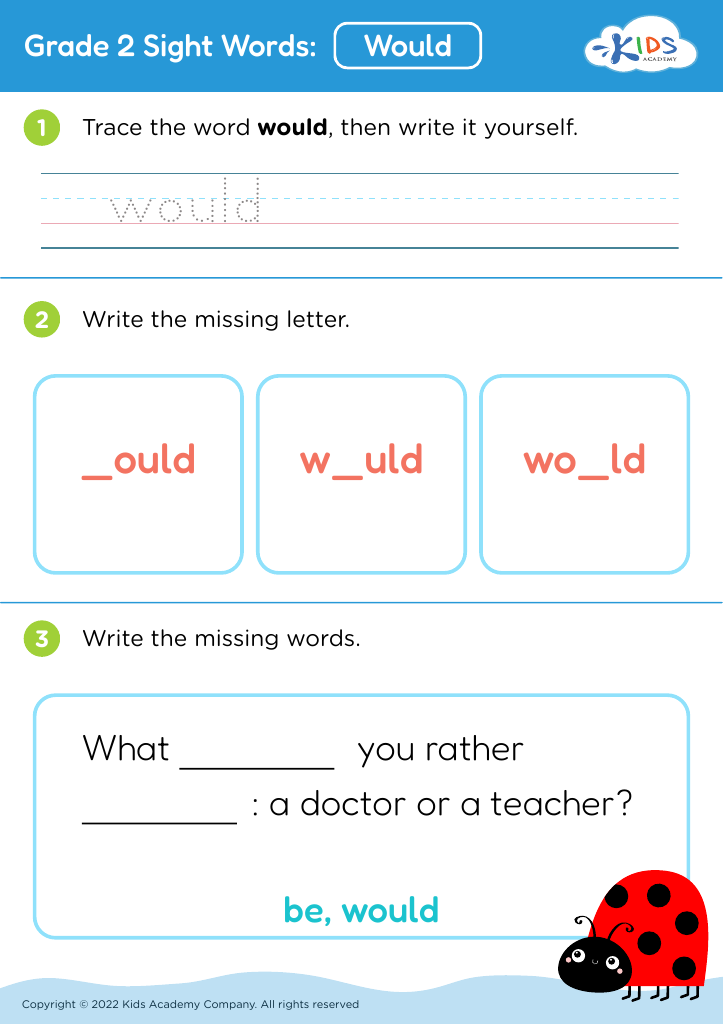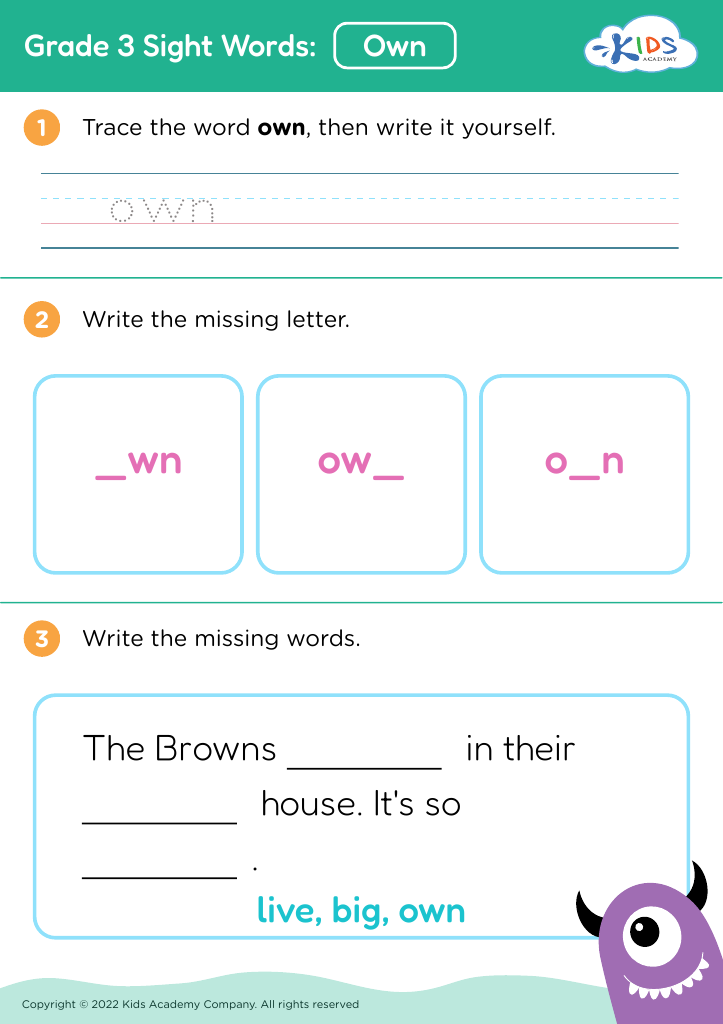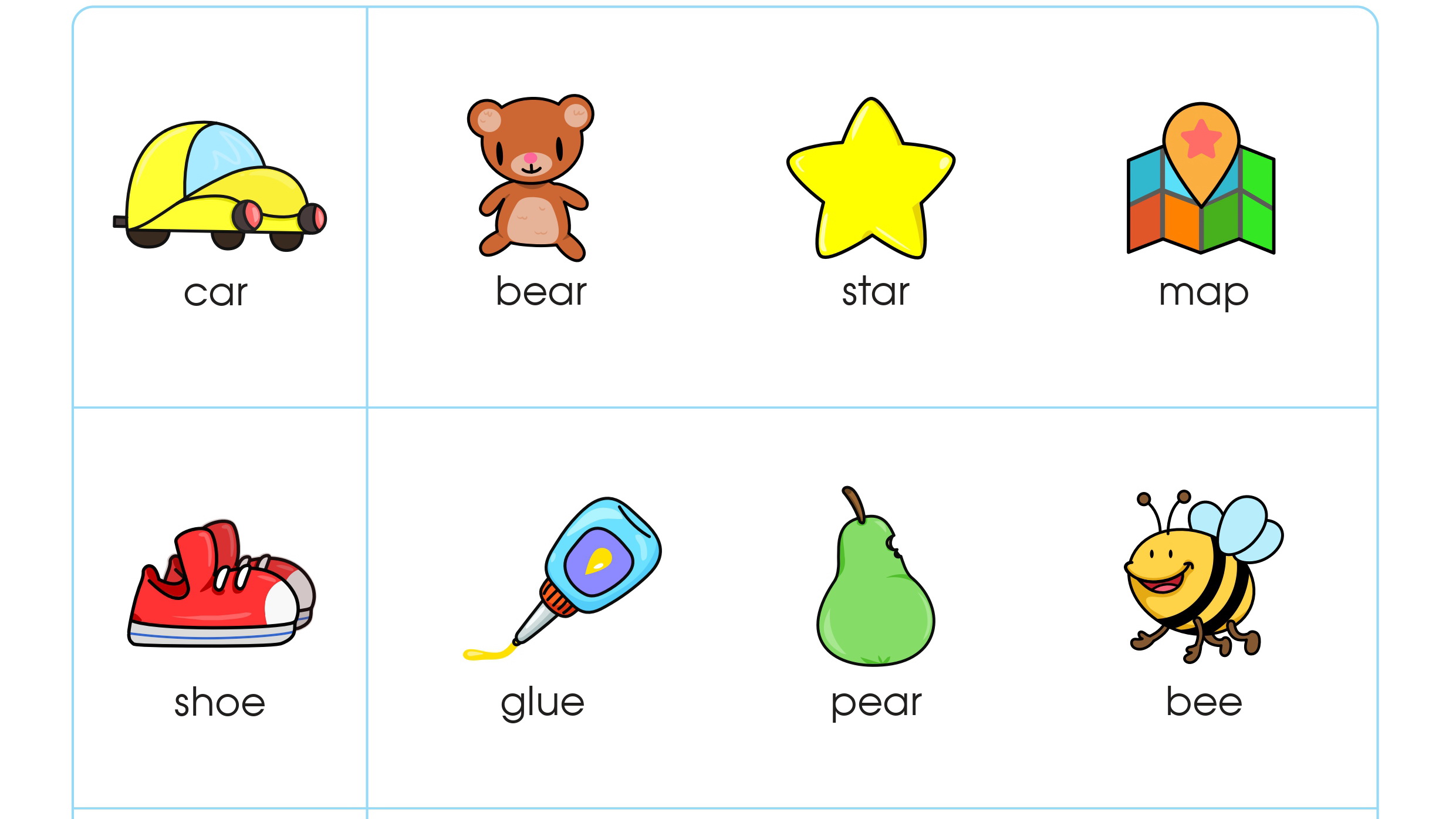Number identification Reading Worksheets for Ages 8-9
3 filtered results
-
From - To
Discover engaging Number Identification Reading Worksheets designed for ages 8-9 to build foundational math and reading skills. Our fun and educational worksheets help students recognize and read numbers, boosting their confidence in both subjects. Filled with interactive exercises, these worksheets make learning enjoyable and effective, catering to your child's unique learning pace. Perfect for classroom use or home practice, these expertly crafted resources ensure children develop critical thinking and problem-solving abilities. Explore our collection at Kids Academy to ignite your child's passion for learning and set the stage for academic success.
Number identification at ages 8-9 is a foundational skill that cannot be overstressed for both parents and teachers. First and foremost, solid number recognition forms the basis for all future mathematical learning. Children who are adept in recognizing numbers can confidently engage in more complex operations like addition, subtraction, and beyond. By mastering number identification, kids are better prepared to grasp place value, understand numerical relationships, and solve real-world problems.
Furthermore, strong number identification skills improve cognitive abilities like memory and attention to detail. These skills are transferable across subjects; for instance, they aid in reading charts in science, measuring ingredients in cooking, or timeline sequencing in history. Importantly, demonstrating good numerical proficiency early on fosters a child's self-esteem and encourages a positive attitude towards learning mathematics, reducing math anxiety.
Beyond academic growth, number recognition sharpens life skills. Tasks like telling time, managing money, and even playing sports often require an understanding of numbers. Thus, nurturing this ability in 8-9 year-olds equips them with essential tools for everyday life. Parents and teachers who prioritize number identification-associated learning activities ultimately contribute to a child’s long-lasting educational journey and self-confidence.





















